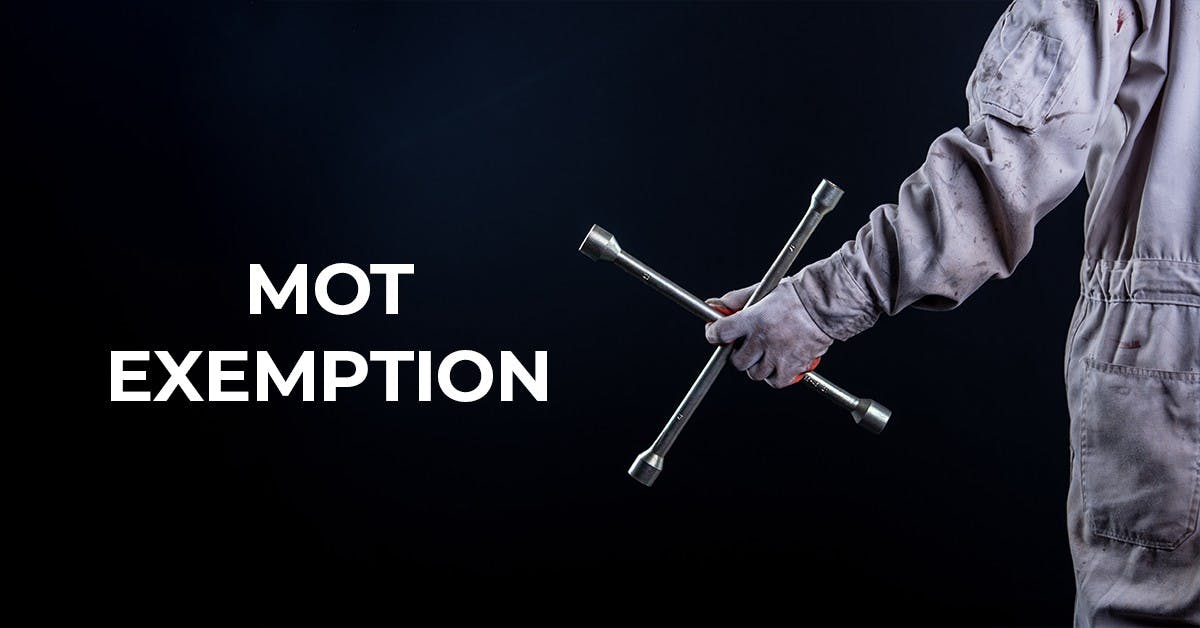For most vehicles, an MOT is a yearly occurrence to ensure our cars are safe and road legal.
Certain vehicles are MOT exempt, meaning they do not need to be MOT tested.
Read on and find out which vehicles are MOT exempt, the grounds for MOT exemption and the process behind applying for an MOT exemption certificate.
Page Contents
How to Apply for MOT Exemption
If your car is eligible for MOT exemption, you can download, print and complete a copy of the V112 form via the gov.uk website.
You can then take this to your local Post Office to declare MOT exemption.
You should take your V5C log book and vehicle tax reminder letter - or V11 - with you, as well as your last valid MOT certificate.
You can still use your vehicle whilst the application is processed.
Is My Car MOT Exempt?
Cars older than 40 years old do not need an MOT.
However, if the car is older than 40 years old and has undergone 'substantial changes', the car will need to be MOT tested.
You will need to declare its Vehicle of Historic Interest (VHI) status when you complete a V112 Form.
This new legislation was introduced in May 2018 for cars registered before May 1978.
Classic car enthusiasts will be pleased to know that this is a rolling date, meaning if you have a car that was registered on August 1st, 1982, it will now be exempt.
If this is the case for your classic car, you will still have to declare it as a Vehicle of Historic Interest.
You must do this when you are applying for your Vehicle Excise Duty (road tax exemption).
Other vehicles that are exempt from needing an MOT are tractors and goods vehicles powered by electricity and registered before 1 March 2015.
Lorries, buses and trailers do not need a traditional MOT but instead have an ‘annual vehicle test’.
What Counts As a Substantial Change?
If your car has had alterations to the technical and main components in the last thirty years, you may not be eligible for MOT exemption.
Of course, it would be near impossible to keep a car running in perfect condition for forty years without the occasional repair.
Here is the list of criteria that counts as a ‘substantial change’:
- Alteration to the suspension or steering of the vehicle, including the axles and running gear
- A difference in numbers of engine cylinders in comparison to the original number
- Chassis of the car, but replacements of the same pattern as the original are not considered a substantial change
- The Monocoque body shell, or ‘structural skin’ of the car, including any sub-frames
It also counts as a substantial change if the car has been given a ‘Q’ registration number - this is when the vehicle’s age or identity is in doubt.
As the age of the vehicle can not be determined, it cannot qualify for MOT exemption.
If your vehicle is a ‘kit car’, assembled from components from different makes and models of vehicles, a kit conversion or a reconstructed classic vehicle (as defined under DVLA guidance), it is not eligible for MOT exemption.
What Doesn’t Count As a Substantial Change?
If the changes have been made with the purpose to improve safety or are using original replacement parts or those of the same design, these are not considered substantial changes.
These include:
- Any parts bought to repair the car where the original versions of the part are no longer in production or available
- A bodyshell with the same design as the original when the vehicle was in production
- Changes to the axles and running gear, only in the case where they have been changed on the grounds of improving efficiency, safety, or environmental performance.
How Do I Declare MOT Exemption?
You can’t just stop taking your vehicle for its MOT, you have to declare it exempt.
You can do this by going to the gov.uk website and filling out the V112 Form.
The form is simple, you just need your vehicle registration number, your full name and signature, and the understanding that you are correctly registering your vehicle as MOT exempt.
What Is Vehicle Excise Duty Exemption?
Vehicle Excise Duty (VED) is more commonly known as ‘road tax’ and has to be paid by most vehicle owners.
However, once your car reaches its 40th birthday and is exempt from having its MOT, it is also eligible for VED exemption.
It should be noted it is still a requirement to have your vehicle taxed - VED exemption just means you don’t have to pay.
Similar to the MOT exemption, you must apply for a vehicle tax exemption.
You can’t do this one online, you’ll have to apply at a Post Office - you’ll need to take your vehicle's logbook, your vehicle tax reminder letter (if you have one), and the V112 to prove your car is exempt from an MOT.
The Post Office will then send your logbook to the DVLA, who will then send you an updated logbook stating your VED exemption.
You’ll receive a letter once your tax is due to expire - you will not have to pay, but you still need to have your vehicle taxed by law.
You could face an £80 fine if you do not tax your vehicle on time.
Is My Car Eligible for Vehicle Tax Exemption?
If your vehicle was built before the 1st January 1984, you can stop paying vehicle tax from the 1st April 2024.
If you aren't sure when your vehicle was built, but it was registered before the 8th January 1984, you won't need to pay vehicle tax from the 1st April 2024.
You must tax your vehicle even if you do not have to pay.
You must apply for vehicle tax exemption to stop paying vehicle tax, which is sometimes known as putting the vehicle into a 'historic tax class'.
Your vehicle will not be eligible for tax exemption if it is used for hire or reward or is used commercially for a trade or business.
Can I Still Get an MOT?
Regardless of the fact your classic car is exempt from needing an MOT, it is still your responsibility to ensure it is safe and roadworthy.
You can do this by referring to the checks on an MOT checklist.
You can still take your car for an MOT, just for peace of mind that your car is running as safely and efficiently as possible.






